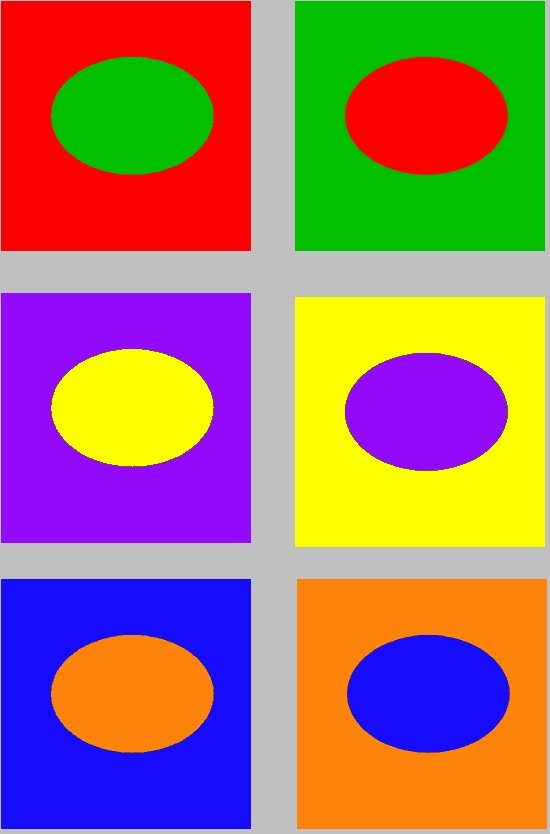In a world where time is measured by moments of solace and discomfort, chronic pain holds the power to transform every tick of the clock into an agonizing symphony. It lingers beneath the surface, an unwelcome companion that has rooted itself in the deepest corners of the human experience. But fear not, for amidst this unsettling melody, lies the hope of relief. Welcome to a journey where the quest for respite from chronic pain takes center stage. In this article, we delve into the vast landscape of chronic pain management strategies, illuminating the path toward a more comfortable existence with a fervor driven by resilience and unwavering determination. Brace yourself, for the symphony of relief is about to crescendo.
Exploring Alternative Therapies: Holistic Approaches to Chronic Pain Relief
Living with chronic pain can be incredibly challenging, often impacting every aspect of one’s life. While traditional medical treatments like medication and surgery may offer some relief, many individuals are now turning to alternative therapies for a more holistic approach. These innovative methods aim to address not only the physical pain but also the emotional and spiritual aspects of the individual’s well-being.
One popular holistic therapy is acupuncture, a centuries-old Chinese practice that involves the insertion of thin needles into specific points on the body. By stimulating these points, acupuncture helps to balance the flow of energy, or Qi, throughout the body. This ancient technique has been found effective in reducing pain and inflammation, as well as promoting relaxation. It is considered safe and is often used in conjunction with other treatments or as an alternative to more invasive procedures.
Another alternative therapy gaining recognition is mindfulness meditation. This practice involves focusing one’s attention on the present moment, without judgment or attachment. By training the mind to remain present, individuals can cultivate a greater sense of awareness and acceptance, leading to a reduction in chronic pain levels. Regular meditation has also been shown to decrease stress, anxiety, and depression, thereby improving overall well-being.
In addition to acupuncture and meditation, other holistic approaches that can provide relief from chronic pain include massage therapy, yoga, and herbal remedies. Massage therapy not only eases sore muscles and promotes relaxation but also stimulates the release of endorphins, the body’s natural painkillers. Yoga, on the other hand, combines gentle movements, stretching, and controlled breathing techniques to enhance flexibility, decrease tension, and improve circulation. Lastly, herbal remedies, such as turmeric or ginger, have anti-inflammatory properties that may help to alleviate pain when incorporated into one’s diet or consumed as supplements.

Harnessing the Power of Exercise: Physical Activities for Long-term Pain Management
Exercise has long been recognized as a powerful tool for managing and alleviating chronic pain. Engaging in physical activities not only helps to strengthen the body but also has a positive impact on our mental well-being. By incorporating regular exercise into our daily routine, we can unlock the incredible potential it holds for long-term pain management.
Embrace a Variety of Activities
When it comes to harnessing the power of exercise, variety is key. Explore different types of physical activities to find what works best for you, ensuring you never get bored or stagnant. From low-impact exercises like swimming and yoga to high-intensity workouts such as weightlifting or kickboxing, each activity brings unique benefits to the table.
Remember to consult with a healthcare professional or physical therapist to determine which activities align with your specific needs and capabilities.
Build Strength and Flexibility
Strength and flexibility are crucial elements in the battle against chronic pain. With regular exercise, these two attributes can be developed and improved, leading to better pain management in the long run. Incorporate strength training exercises to build muscle and enhance physical stability. Focus on stretching routines to increase flexibility, which helps alleviate muscle tension and reduce the risk of injuries.
Mind-Body Practices
Aside from physical activities, mind-body practices have also proven to be invaluable for pain management. Activities such as Tai Chi, meditation, and deep breathing exercises have been shown to reduce stress, improve focus, and enhance overall quality of life. By integrating these practices into your routine, you tap into a holistic approach that not only targets physical pain but also supports mental and emotional well-being.
Remember, the journey to long-term pain management through exercise requires patience and consistency. Start slowly, progressing gradually as your body adapts. Listen to your body and modify activities accordingly. With dedication and the right combination of physical and mind-body exercises, you can unleash the power of exercise to conquer chronic pain and embrace a more fulfilling life.

Navigating Medication Options: Finding the Right Balance for Chronic Pain Relief
Living with chronic pain can be incredibly challenging, but finding the right balance of medication options can provide much-needed relief. With a multitude of medications available, it’s important to explore all possibilities and work closely with your healthcare provider in order to discover the best approach for managing your pain.
One option to consider is nonsteroidal anti-inflammatory drugs (NSAIDs). These over-the-counter medications, such as ibuprofen or naproxen, can help reduce inflammation and relieve pain. They are typically recommended for mild to moderate pain and can be quite effective when used as directed. Remember to always follow the recommended dosage and be cautious of potential side effects, such as stomach irritation or allergic reactions.
For more severe or persistent pain, prescription opioids may be necessary. While opioid medications can provide fast and effective relief, they come with a higher risk of addiction and other serious side effects. It’s crucial to approach opioids with caution and strictly follow your doctor’s instructions. Discuss any concerns or potential alternatives with your healthcare provider to ensure the safest and most effective pain management plan for your specific needs.
- Another potential approach is considering adjuvant medications, which are typically used alongside other treatments to enhance their effectiveness. These may include antidepressants or anticonvulsants, which can help manage neuropathic pain and improve overall pain control.
- Physical therapy and alternative therapies, such as acupuncture or chiropractic care, can also play a significant role in pain management. They focus on improving mobility, strengthening muscles, and relieving tension without relying solely on medications.
- Remember that finding the right balance may take time and patience, as each person’s experience with chronic pain is unique. Open communication with your healthcare provider is essential to monitor the effectiveness of your current medications, evaluate potential adjustments, and ensure that your overall pain management approach remains safe and efficient.
Ultimately, there is no one-size-fits-all solution when it comes to chronic pain relief. Through an informed and collaborative approach, exploring various medication options, adjuvant therapies, and open communication with your healthcare team, you can navigate the complex world of pain management to find the right balance that offers you the best relief and quality of life.

Unlocking the Mind-Body Connection: Mindfulness Techniques for Managing Chronic Pain
Living with chronic pain can be challenging, affecting every aspect of your life. However, by harnessing the power of the mind-body connection through mindfulness techniques, you can effectively manage your pain and improve your overall well-being.
Mindfulness, rooted in ancient practices, has gained significant recognition in contemporary healthcare as a powerful tool for pain management. By focusing your attention on the present moment without judgment, you can alter the way your brain processes pain signals and cultivate a deeper awareness of your body’s sensations.
Here are some mindfulness techniques to help you unlock the mind-body connection and ease chronic pain:
- Deep Breathing: Take slow, deep breaths, focusing on the sensation of the breath entering and leaving your body. This simple yet powerful technique helps calm your nervous system and reduces stress levels, which can amplify pain.
- Body Scan: Close your eyes and systematically scan your body, paying attention to any areas of tension or discomfort. Bring your full attention to these sensations, acknowledging them without judgment. By doing so, you can promote relaxation and release muscle tension.
- Guided Imagery: Use your imagination to transport yourself to a peaceful and soothing place, visualizing yourself free from pain. Engaging all your senses helps redirect your focus away from pain, promoting a sense of calm and relaxation.
- Meditation: Set aside dedicated time each day to practice meditation. Find a comfortable position, focus on your breath, and let your thoughts come and go without attachment. Over time, this practice can help cultivate a sense of acceptance and non-resistance towards pain.
Remember, the mind and body are not separate entities but rather interconnected. By incorporating these mindfulness techniques into your daily routine, you can unlock the mind-body connection, empowering yourself to better manage chronic pain and improve your overall quality of life.

Complementary Treatments: Integrative Approaches to Alleviate Chronic Pain
Living with chronic pain can be incredibly challenging, affecting all aspects of daily life. While traditional medical interventions are crucial, exploring complementary treatments can provide additional support for those seeking relief. Integrative approaches, when used in conjunction with conventional medicine, have shown promising results in reducing pain and increasing overall well-being.
1. Acupuncture
Originating from ancient Chinese medicine, acupuncture involves inserting thin needles into specific points on the body to stimulate energy flow and restore balance. Studies have suggested that acupuncture may help alleviate chronic pain, such as migraines, arthritis, and back pain. By targeting key pressure points, it can disrupt pain signals, promote relaxation, and improve blood flow.
2. Mind-body Techniques
Integrating the mind and body can be a powerful tool in managing chronic pain. Practices like meditation, yoga, and tai chi focus on reducing stress, enhancing self-awareness, and improving flexibility. These techniques promote relaxation, boost mood, and reduce anxiety, enabling individuals to cope better with pain. By cultivating mindfulness and harnessing the mind’s natural abilities, it becomes possible to modulate pain perception.
3. Herbal Remedies
Nature has long provided potential remedies for pain relief. Certain herbal supplements, such as turmeric, ginger, and devil’s claw, have shown anti-inflammatory properties, which can be beneficial for individuals with chronic pain conditions like osteoarthritis and fibromyalgia. While it is important to consult a healthcare professional before incorporating herbal remedies, these natural alternatives offer potential relief and fewer side effects compared to traditional medications.
In conclusion, incorporating complementary treatments alongside traditional medical therapies can open up new avenues for chronic pain management. Acupuncture, mind-body techniques, and herbal remedies are just a few examples of how a more holistic approach can alleviate pain, enhance overall well-being, and provide hope for those seeking relief.
To Conclude
As we conclude our exploration into the realm of chronic pain management, we hope to have shed light on the diverse array of strategies available to alleviate the burdensome weight that pain can impose upon our lives. It is a journey fraught with challenges, as each person’s experience of pain is as unique as a snowflake on a winter’s day.
From the robust medical interventions that science has bestowed upon us to the delicate art of self-care and alternative therapies, we have navigated a veritable labyrinth of possibilities — always with the ultimate goal of finding relief. In this waltz between patience and resilience, we have learned that pain management is a tapestry interwoven with physical, emotional, and psychological dimensions.
By embracing a holistic approach, we empower ourselves to confront the tyranny of chronic pain, standing tall against its unyielding persistence. With each page turned, lives changed, and stories shared, our collective resilience strengthens, reminding us that we are not alone in this arduous battle. Support and understanding become guiding beacons, illuminating the darkest corners of uncertainty.
Although we have not unveiled a one-size-fits-all solution, we have unraveled the notion that chronic pain is an insurmountable labyrinth from which there is no escape. It is a beast that can be tamed, its impact lessened through a carefully constructed tapestry of interventions. Whether it be the realms of modern medicine, alternative therapies, or the innate strength within ourselves, we paint strokes of hope upon the canvas of our lives.
So as we depart from this exploration, let us remember that chronic pain management is a lifelong symphony, requiring constant compassion, innovation, and perseverance. The path may be arduous, winding, and unpredictable, but armed with knowledge, embracing the support of others, and nurturing the flame of resilience within, we can traverse even the harshest terrains.
May this knowledge be a lantern in the darkest hours, a reminder that relief is not beyond our grasp. And as we move forward on our individual journeys, let us march united in our quest for a life unburdened by pain, for there is strength in solidarity, and hope on even the darkest of days.




